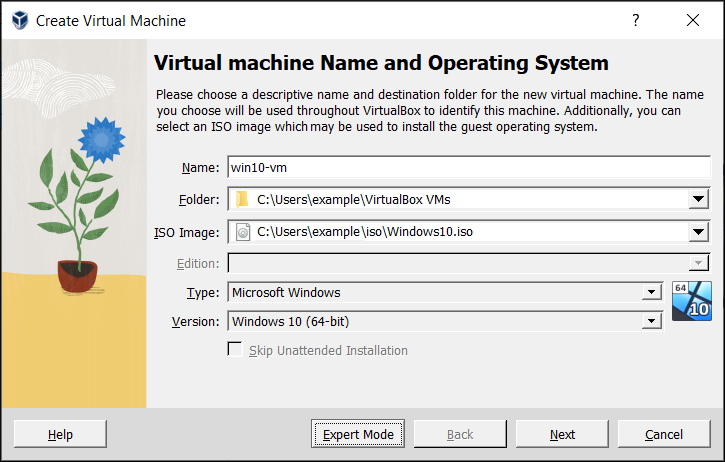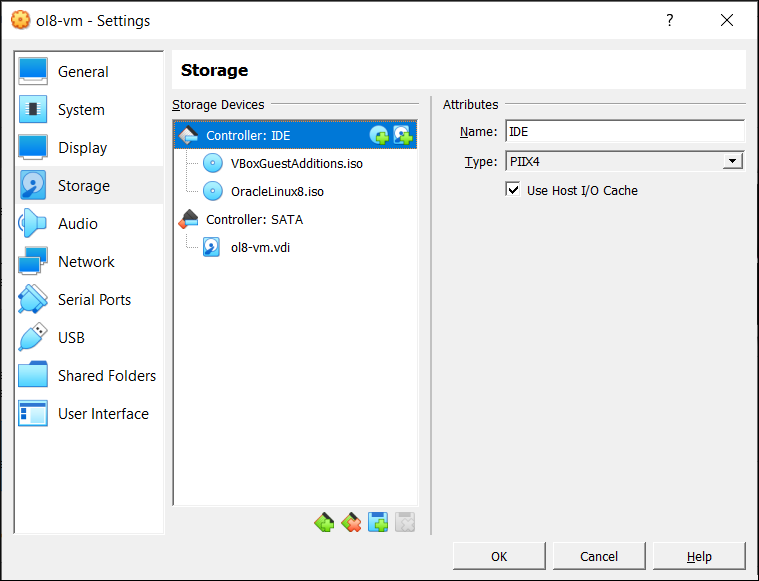Implementing virtualization on x86 CPUs with no hardware virtualization support is an extraordinarily complex task because the CPU architecture was not designed to be virtualized. The problems can usually be solved, but at the cost of reduced performance. Thus, there is a constant clash between virtualization performance and accuracy.
The x86 instruction set was originally designed in the 1970s and underwent significant changes with the addition of protected mode in the 1980s with the 286 CPU architecture and then again with the Intel 386 and its 32-bit architecture. Whereas the 386 did have limited virtualization support for real mode operation with V86 mode, as used by the 'DOS Box' of Windows 3.x and OS/2 2.x, no support was provided for virtualizing the entire architecture.
In theory, software virtualization is not overly complex. There are four privilege levels, called rings, provided by the hardware. Typically only two rings are used: ring 0 for kernel mode and ring 3 for user mode. Additionally, one needs to differentiate between host context and guest context.

VirtualBox is a family of powerful x86 virtualization products for enterprise as well as home use. Not only is VirtualBox an extremely feature rich, high performance product for enterprise customers, it is also the only professional solution that is freely available as Open Source Software under the terms of the GNU General Public License (GPL). VirtualBox 5.1.0 RC1 VirtualBox is a powerful x86 and AMD64/Intel64 virtualization product for enterprise as well as home use. Boot Camp Software Update 5.0.5033. VirtualBox Is A Powerful X86 And AMD64/Intel64 Virtualization Product For Enterprise As Well As Home Use Like X86 Hardware, Targeted At Server, Desktop And Embedded Use. Not Only Is VirtualBox An Extremely Feature Rich, High Performance Product For Enterprise Customers. VirtualBox 5.1.0 – x86 virtualization software. July 19, 2016 VirtualBox is a family of powerful x86 virtualization products for enterprise as well as home use.
In host context, everything is as if no hypervisor was active. This might be the active mode if another application on your host has been scheduled CPU time. In that case, there is a host ring 3 mode and a host ring 0 mode. The hypervisor is not involved.
Virtualbox 5 1 0 – X86 Virtualization Software Download
In guest context, however, a virtual machine is active. So long as the guest code is running in ring 3, this is not much of a problem since a hypervisor can set up the page tables properly and run that code natively on the processor. The problems mostly lie in how to intercept what the guest's kernel does.
There are several possible solutions to these problems. One approach is full software emulation, usually involving recompilation. That is, all code to be run by the guest is analyzed, transformed into a form which will not allow the guest to either modify or see the true state of the CPU, and only then executed. This process is obviously highly complex and costly in terms of performance. Oracle VM VirtualBox contains a recompiler based on QEMU which can be used for pure software emulation, but the recompiler is only activated in special situations, described below.
Another possible solution is paravirtualization, in which only specially modified guest OSes are allowed to run. This way, most of the hardware access is abstracted and any functions which would normally access the hardware or privileged CPU state are passed on to the hypervisor instead. Paravirtualization can achieve good functionality and performance on standard x86 CPUs, but it can only work if the guest OS can actually be modified, which is obviously not always the case.

VirtualBox is a family of powerful x86 virtualization products for enterprise as well as home use. Not only is VirtualBox an extremely feature rich, high performance product for enterprise customers, it is also the only professional solution that is freely available as Open Source Software under the terms of the GNU General Public License (GPL). VirtualBox 5.1.0 RC1 VirtualBox is a powerful x86 and AMD64/Intel64 virtualization product for enterprise as well as home use. Boot Camp Software Update 5.0.5033. VirtualBox Is A Powerful X86 And AMD64/Intel64 Virtualization Product For Enterprise As Well As Home Use Like X86 Hardware, Targeted At Server, Desktop And Embedded Use. Not Only Is VirtualBox An Extremely Feature Rich, High Performance Product For Enterprise Customers. VirtualBox 5.1.0 – x86 virtualization software. July 19, 2016 VirtualBox is a family of powerful x86 virtualization products for enterprise as well as home use.
In host context, everything is as if no hypervisor was active. This might be the active mode if another application on your host has been scheduled CPU time. In that case, there is a host ring 3 mode and a host ring 0 mode. The hypervisor is not involved.
Virtualbox 5 1 0 – X86 Virtualization Software Download
In guest context, however, a virtual machine is active. So long as the guest code is running in ring 3, this is not much of a problem since a hypervisor can set up the page tables properly and run that code natively on the processor. The problems mostly lie in how to intercept what the guest's kernel does.
There are several possible solutions to these problems. One approach is full software emulation, usually involving recompilation. That is, all code to be run by the guest is analyzed, transformed into a form which will not allow the guest to either modify or see the true state of the CPU, and only then executed. This process is obviously highly complex and costly in terms of performance. Oracle VM VirtualBox contains a recompiler based on QEMU which can be used for pure software emulation, but the recompiler is only activated in special situations, described below.
Another possible solution is paravirtualization, in which only specially modified guest OSes are allowed to run. This way, most of the hardware access is abstracted and any functions which would normally access the hardware or privileged CPU state are passed on to the hypervisor instead. Paravirtualization can achieve good functionality and performance on standard x86 CPUs, but it can only work if the guest OS can actually be modified, which is obviously not always the case.
Android X86 Virtualbox Setup
Oracle VM VirtualBox chooses a different approach. When starting a virtual machine, through its ring-0 support kernel driver, Oracle VM VirtualBox has set up the host system so that it can run most of the guest code natively, but it has inserted itself at the 'bottom' of the picture. It can then assume control when needed. If a privileged instruction is executed, the guest traps, in particular because an I/O register was accessed and a device needs to be virtualized, or external interrupts occur. Oracle VM VirtualBox may then handle this and either route a request to a virtual device or possibly delegate handling such things to the guest or host OS. In guest context, Oracle VM VirtualBox can therefore be in one of three states:
Guest ring 3 code is run unmodified, at full speed, as much as possible. The number of faults will generally be low, unless the guest allows port I/O from ring 3. This is something we cannot do as we do not want the guest to be able to access real ports. This is also referred to as raw mode, as the guest ring-3 code runs unmodified.
For guest code in ring 0, Oracle VM VirtualBox employs a clever trick. It actually reconfigures the guest so that its ring-0 code is run in ring 1 instead, which is normally not used in x86 operating systems). As a result, when guest ring-0 code, actually running n ring 1, such as a guest device driver attempts to write to an I/O register or execute a privileged instruction, the Oracle VM VirtualBox hypervisor in the 'real' ring 0 can take over.
The hypervisor (VMM) can be active. Every time a fault occurs, Oracle VM VirtualBox looks at the offending instruction and can relegate it to a virtual device or the host OS or the guest OS or run it in the recompiler.
In particular, the recompiler is used when guest code disables interrupts and Oracle VM VirtualBox cannot figure out when they will be switched back on. In these situations, Oracle VM VirtualBox actually analyzes the guest code using its own disassembler. Also, certain privileged instructions such as LIDT need to be handled specially. Finally, any real-mode or protected-mode code, such as BIOS code, a DOS guest, or any operating system startup, is run in the recompiler entirely.
Unfortunately this only works to a degree. Among others, the following situations require special handling:
Running ring 0 code in ring 1 causes a lot of additional instruction faults, as ring 1 is not allowed to execute any privileged instructions, of which guest's ring-0 contains plenty. With each of these faults, the VMM must step in and emulate the code to achieve the desired behavior. While this works, emulating thousands of these faults is very expensive and severely hurts the performance of the virtualized guest.
There are certain flaws in the implementation of ring 1 in the x86 architecture that were never fixed. Certain instructions that should trap in ring 1 do not. This affects, for example, the LGDT/SGDT, LIDT/SIDT, or POPF/PUSHF instruction pairs. Whereas the 'load' operation is privileged and can therefore be trapped, the 'store' instruction always succeed. If the guest is allowed to execute these, it will see the true state of the CPU, not the virtualized state. The CPUID instruction also has the same problem.
A hypervisor typically needs to reserve some portion of the guest's address space, both linear address space and selectors, for its own use. This is not entirely transparent to the guest OS and may cause clashes.
The SYSENTER instruction, used for system calls, executed by an application running in a guest OS always transitions to ring 0. But that is where the hypervisor runs, not the guest OS. In this case, the hypervisor must trap and emulate the instruction even when it is not desirable.
The CPU segment registers contain a 'hidden' descriptor cache which is not software-accessible. The hypervisor cannot read, save, or restore this state, but the guest OS may use it.
Some resources must, and can, be trapped by the hypervisor, but the access is so frequent that this creates a significant performance overhead. An example is the TPR (Task Priority) register in 32-bit mode. Accesses to this register must be trapped by the hypervisor. But certain guest operating systems, notably Windows and Oracle Solaris, write this register very often, which adversely affects virtualization performance.
To fix these performance and security issues, Oracle VM VirtualBox contains a Code Scanning and Analysis Manager (CSAM), which disassembles guest code, and the Patch Manager (PATM), which can replace it at runtime.
Before executing ring 0 code, CSAM scans it recursively to discover problematic instructions. PATM then performs in-situ patching. It replaces the instruction with a jump to hypervisor memory where an integrated code generator has placed a more suitable implementation. In reality, this is a very complex task as there are lots of odd situations to be discovered and handled correctly. So, with its current complexity, one could argue that PATM is an advanced in-situ recompiler.
In addition, every time a fault occurs, Oracle VM VirtualBox analyzes the offending code to determine if it is possible to patch it in order to prevent it from causing more faults in the future. This approach works well in practice and dramatically improves software virtualization performance.
Copyright © 2004, 2020 Oracle and/or its affiliates. All rights reserved. Legal Notices
